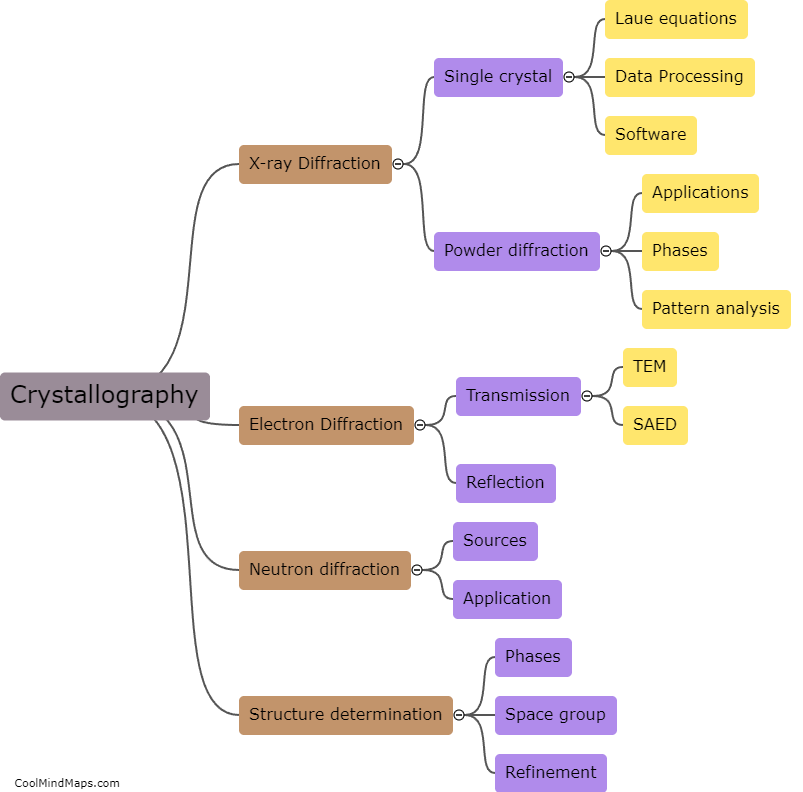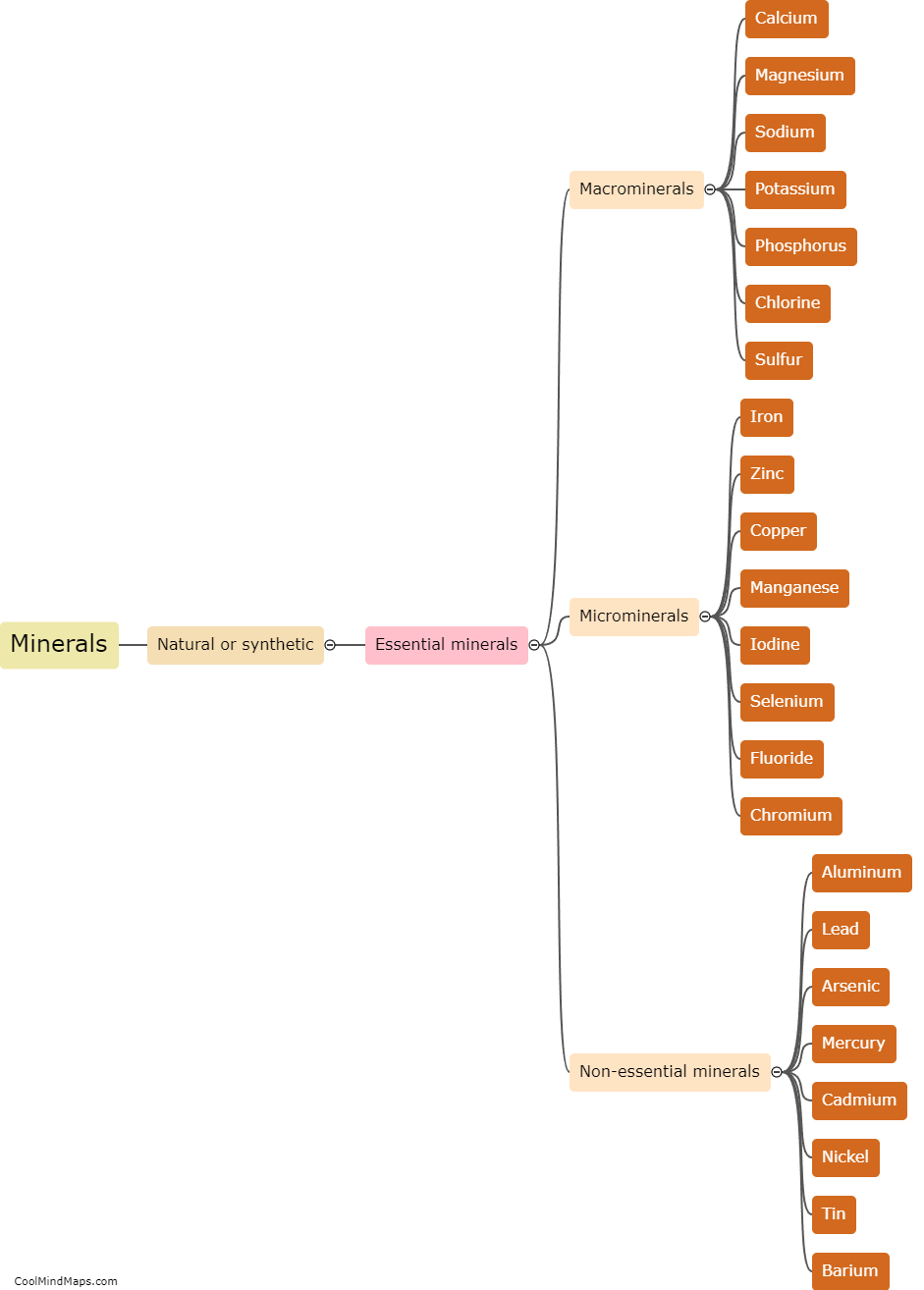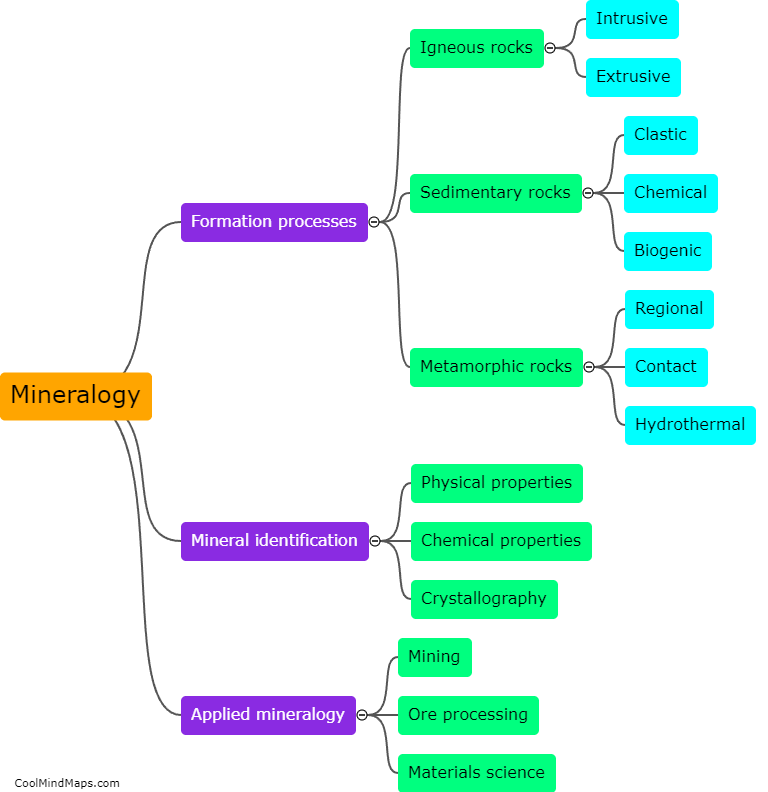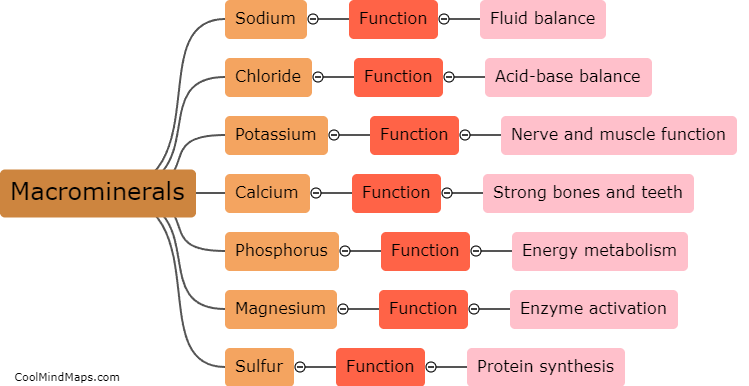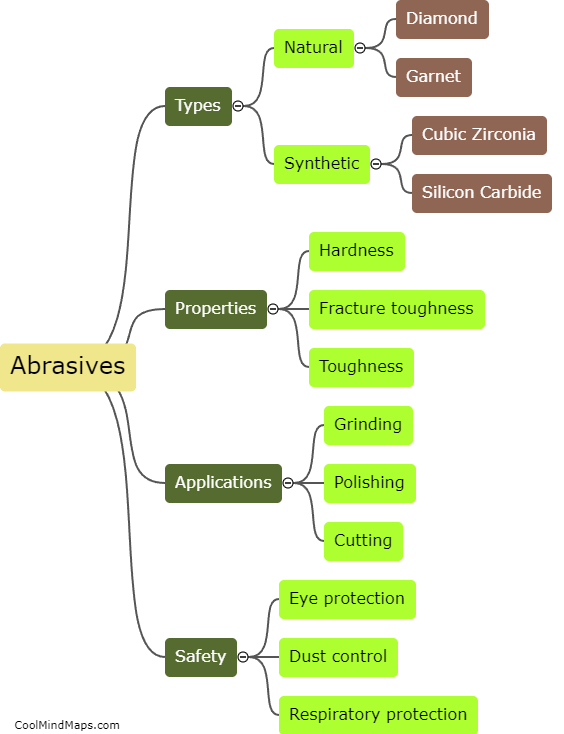How are crystals formed?
Crystals are formed through a process called crystallization. It occurs when a liquid or gas solidifies and the constituent particles arrange themselves in an orderly, repeating pattern. This process can occur either naturally or artificially. In nature, crystals can be formed through the slow cooling and solidification of magma or the evaporation of water in bodies of water. In contrast, artificial crystals can be created by dissolving a solute in a solvent, then cooling or evaporating off the solvent to force the solute's particles to gradually link together. The precise appearance of the resulting crystal depends on a variety of factors, including the temperature and pressure under which it forms and the properties of the constituent particles.

This mind map was published on 3 May 2023 and has been viewed 125 times.




